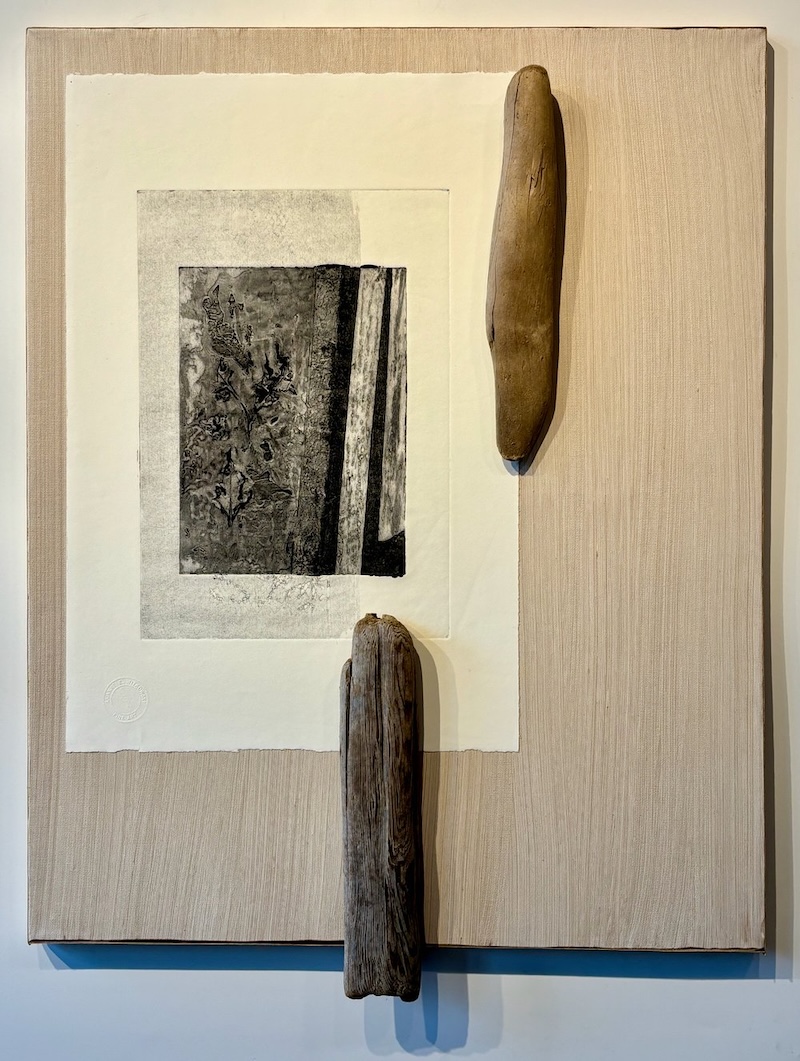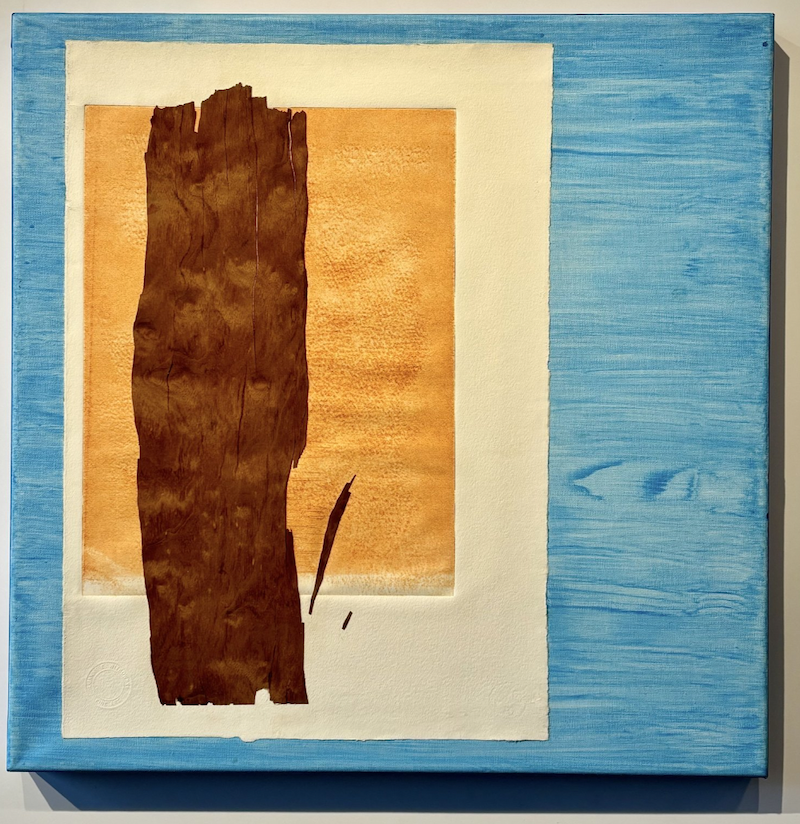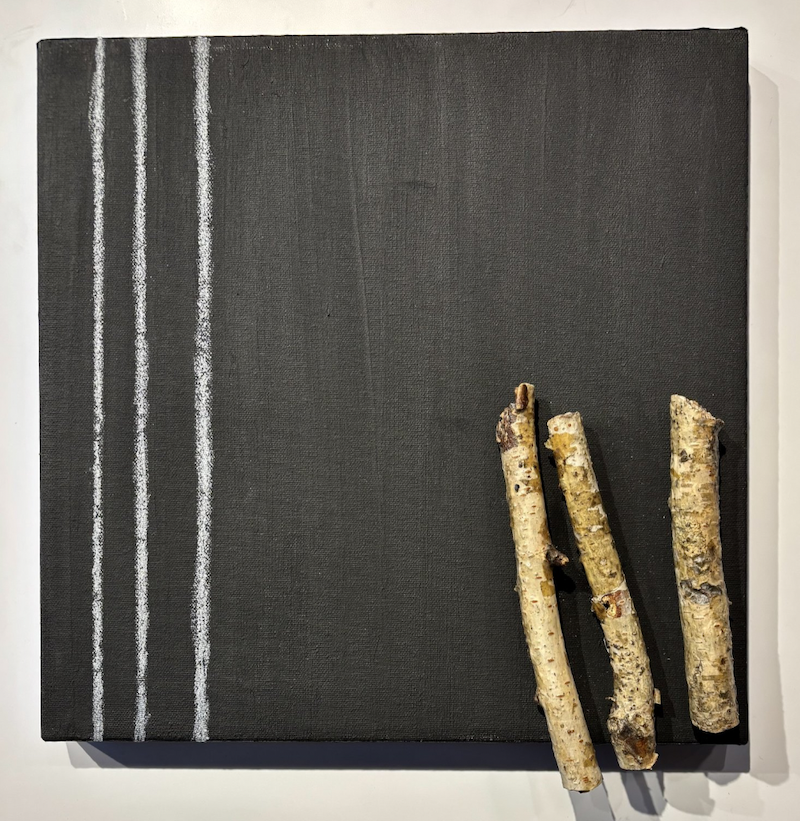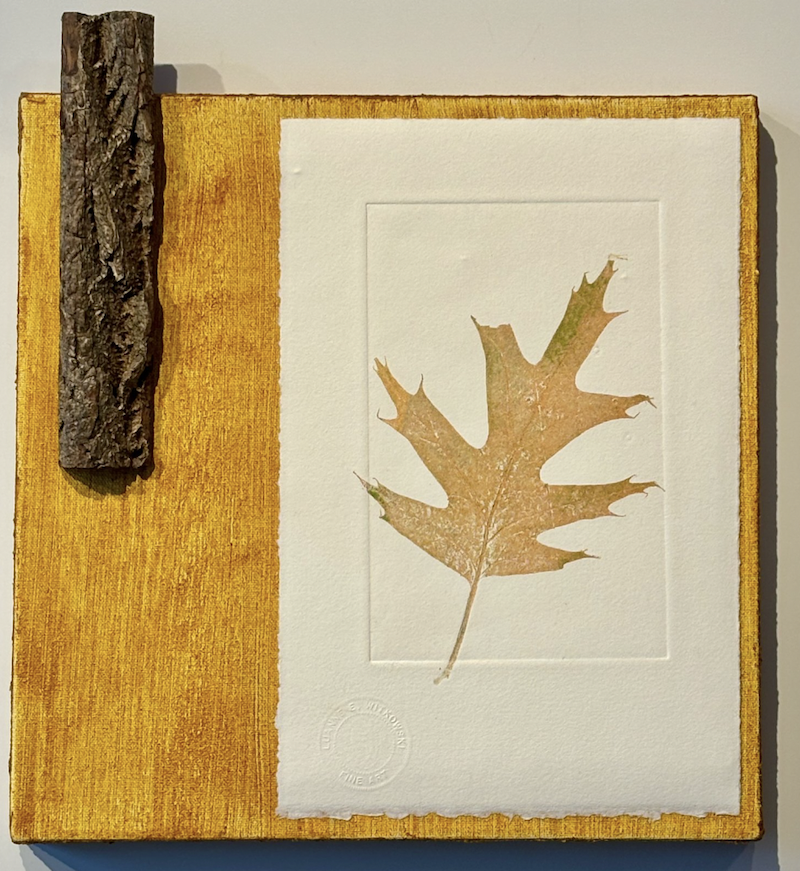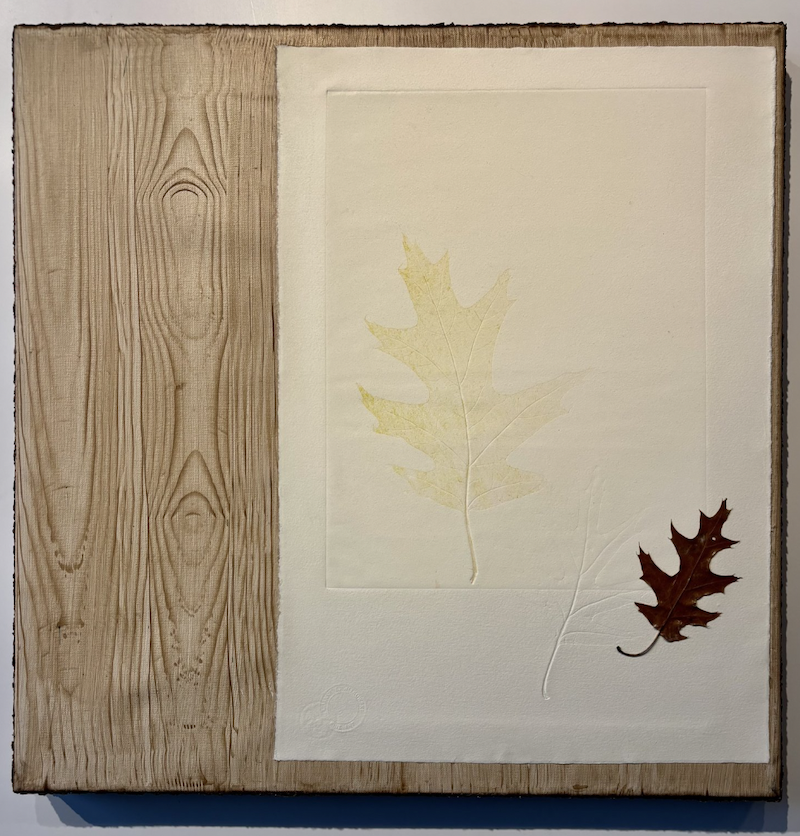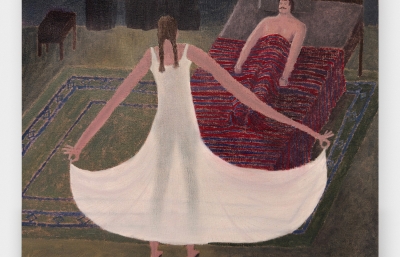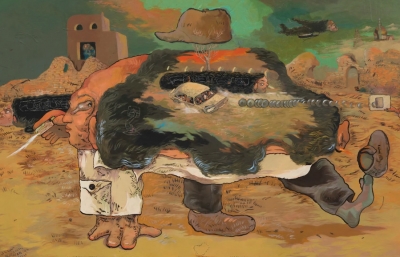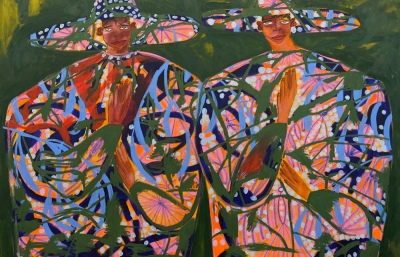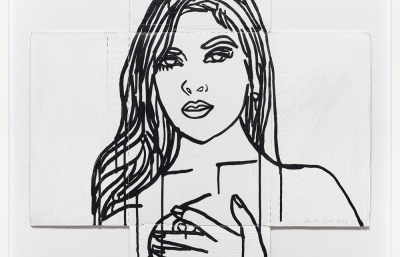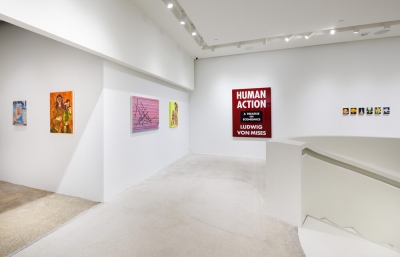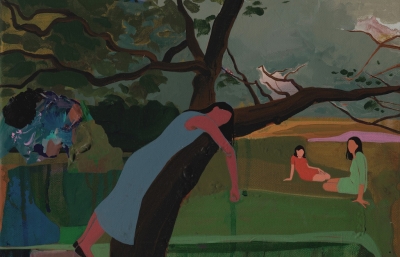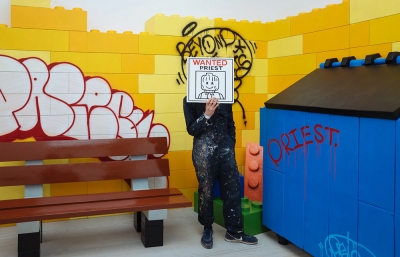I have been following the artistic trajectory of Luanne E. Witkowski for some years. I am repeatedly amazed by this artist’s reinvention of her practice through ever new discreet bodies of work, while retaining her distinctive voice. “Quiet disruption,” now on view at Kingston Gallery in Boston delivers her latest iteration of abstraction and metaphor, and quite honestly her most sophisticated and sublime show to date.
A multidisciplinary artist, with work that has rigorously explored drawing, painting, printmaking, found objects, installation, environmental and land art, Witkowski returns to the immediacy of drawing and printmaking and the juxtaposition of mixed media in this latest show with works she titles as “Peace Offerings.” A master of color and composition, her new work re-addresses the grid, and how nature's contours contrast with that utilitarian abstract geometry which in itself is an origin of conceptual art.
Take, for instance, the possible reference to the origins of numerical systems and the abacus that I am able to imagine in Peace Offering IX. I can see pieces of Birch wood holding places for the number of water fowl spotted on a particular evening as referenced by the dark ground. Then perhaps the number is further abstracted by scratches made against a cave wall during a mapping of a calendar of these visits to track the birds. Then in further sophistication of the language of abstraction in Peace Offering I, I am able to visualize an aestheticized cosmology: A square sun (!!) rising through a sunshower that feeds a river poetically populated with rocks forms a metaphor for an ideal garden that continues to emerge from our home planet today.
With a double major BFA from MassArt in printmaking and art history, and an MA from Umass Boston in critical and creative thinking, Witkowski’s work has been layered and complex from the very beginning. In her love for artists associated with Minimalism, I recognize nods to these past masters, be they conscious or not. I see the late works of Agnes Martin that brought organic forms and the artist’s hand to her austere patterns and color fi elds in Peace Offering IV (Land of the Silver Birch,) and in Peace Offering XI. I recognize the “zipper lines” of Barnett Newman in many of the works including Peace Offering XIV, and I can even detect a trace of Donald Judd’s “stacks” on the left side of Peace offering XVIII and Peace Offering XX.
Beyond these personal and historical contextualizations, there is a reconsidered and reactivated deployment of materiality as a salve or a touchstone. Much in the way that an ocean swim or a forest bath can restore one’s soul, there are tactile signifi ers from nature. Some are in their original untouched state, while others are ground with a pestle, or even run through the press themselves, further complicating their inclusion. Witkowski’s work is a studied observation of the relationships of natural phenomena with modern human experience. And like Newman’s essentialism, unifying the macro and the micro in his Onement works, Witkowski has distilled the synthetic and the organic as well as the “eternal and ephemeral” (from the press release) into metaphors for the late anthropocene era, and the ultimate endurance and survival of nature, with or without us.
For example, isolated and immediately recognizable found organic materials converse with fabricated geometric forms and supports. Color and scale alternately highlight, intensify, and harmonize these relationships. Space is toyed with and balanced through layering and navigating edges. These works puzzle together representations of our natural and invented worlds and hold the contradictions of “progress” that they create in a unifi ed composition without imposing any particular politics. We are given the space to decide where our attention is being called and what we will choose to focus on.
These compositions refl ect on our shared contemporary existential dilemma of separation from, and hunger for nature and our search for meaning. The work asks if a return to the garden is even possible, and what that could and will even look like. But a hope for transformation through awareness lies in the very choices Witkowski makes to create these works. Many of her materials are self made using natural organic sources such as spices, shells, fl ora, and foraged resources, along with repurposed and recycled components. This reclaiming of the “means of production” in art making reorients studio practice towards the artist’s commitment to sustainability. This process immerses the artist in the wisdom of the natural world and contributes to her own physical health through hikes and scavenging, mixing and building. It also resists and disrupts the technology driven post-industrial art complex’s obsession with novelty and consumerism that drives extraction capitalism and environmental collapse.
But the works in Quiet disruption do not generate angst over these topical considerations. Rather they offer respite from hurried schedules and doom scrolling. They grant us precious pause from these relentless demands, and open up a spaciousness for broader horizons and deeper understandings. Gentle, uncomplicated, and considered balances of shape, form, color and symbolism combine in an aesthetic perspective of beauty that is more than just a virtue in itself. These edifying works support our role in critically addressing what is needed if we want to cocreate a sustainable culture. —Grey Dey
Studio talk with the artist: https://www.instagram.com/reel/DKkPz3LAUVK/
“Quiet disruption” runs through July 29th at Kinston Gallery, Boston, MA.



